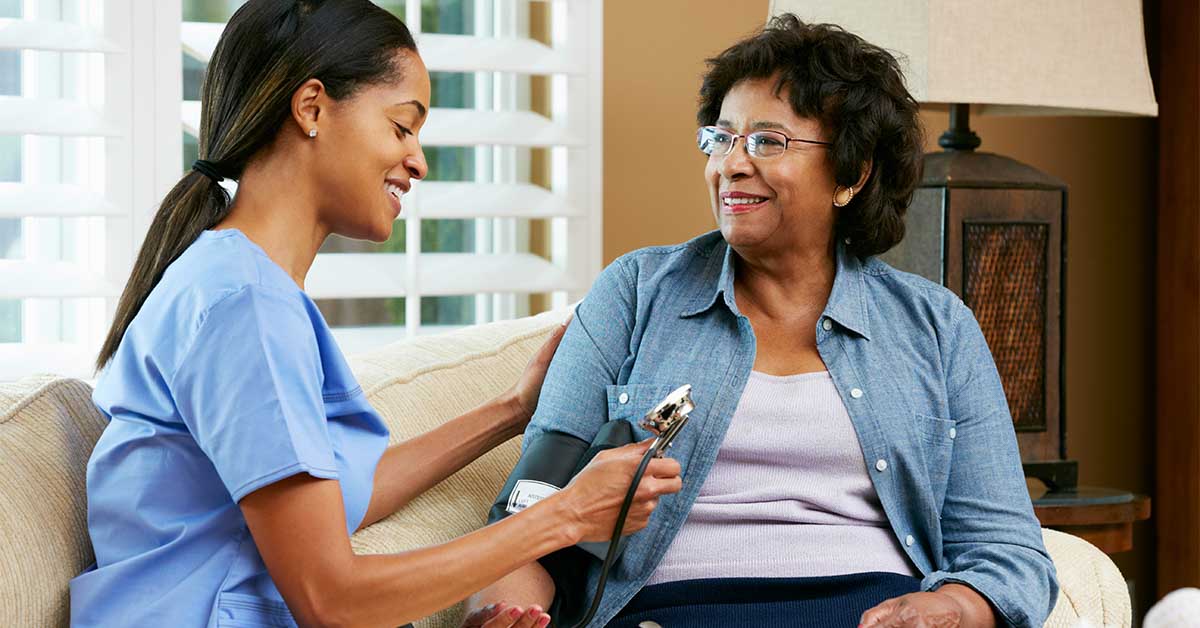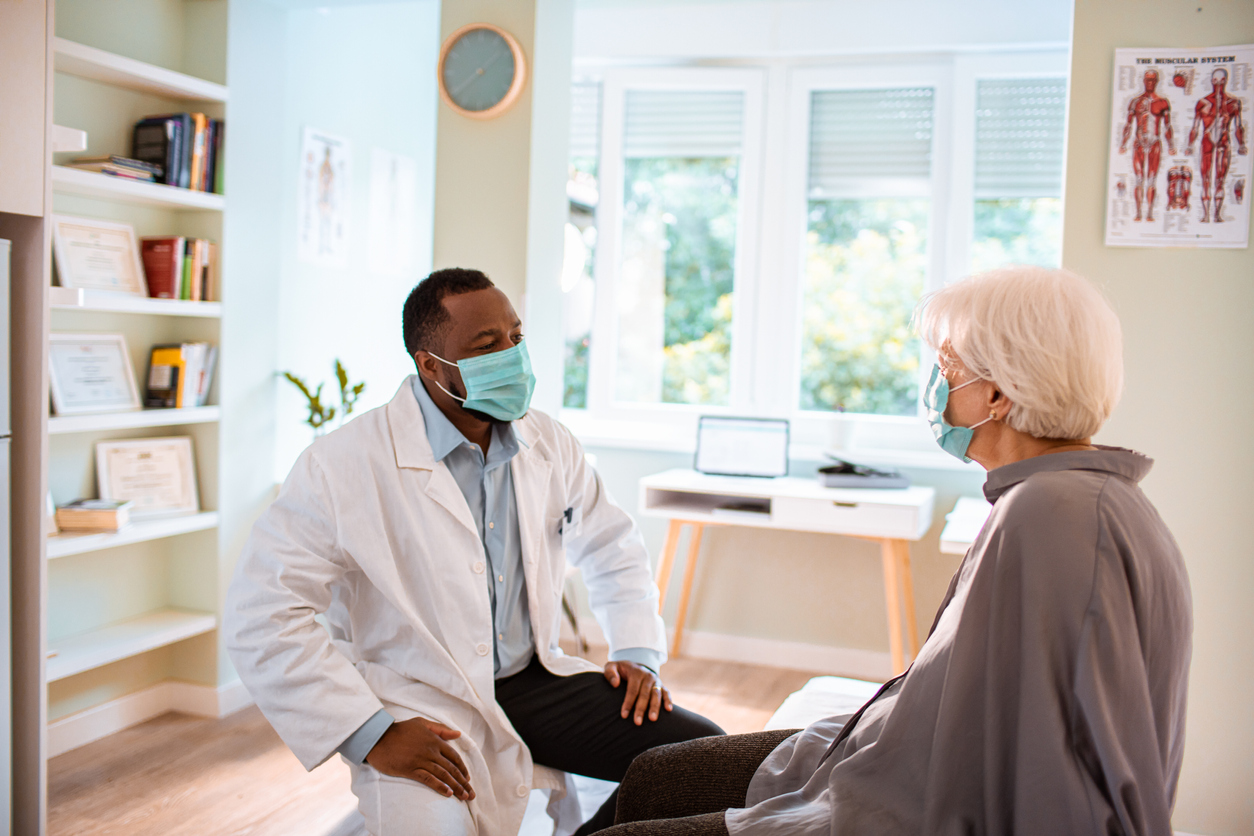Home>Misc>Featured>What Is The Primary Role Of Communication In Enhancing Health?


Featured
What Is The Primary Role Of Communication In Enhancing Health?
Modified: January 2, 2024
Discover the featured role of communication in enhancing health and well-being. Learn how effective communication can positively impact overall health outcomes.
Introduction
Communication plays a pivotal role in enhancing health and well-being across all aspects of healthcare. Effective communication is vital for establishing strong relationships between patients and healthcare providers, facilitating informed decision-making, and promoting positive health outcomes.
Clear and concise communication builds trust, ensures patient safety, and promotes shared decision-making. It enables healthcare providers to accurately assess patients’ needs, symptoms, and concerns, leading to accurate diagnoses and appropriate treatment plans. Additionally, effective communication empowers patients to actively participate in their own healthcare, making informed decisions and adhering to treatment regimens.
With the advancements in technology and the increasing emphasis on patient-centered care, communication now extends beyond face-to-face interactions. Digital platforms, telemedicine, and mobile applications facilitate communication between patients and healthcare providers, enabling access to timely medical advice, remote monitoring, and health education.
This article explores the primary role of communication in enhancing health and highlights its importance in various healthcare contexts, including patient-provider interactions, patient empowerment, health education, health promotion, disease prevention, treatment adherence, and health equity. It also acknowledges the growing influence of communication technology in transforming the healthcare landscape.
Effective communication is a fundamental pillar of a well-functioning healthcare system. By understanding the pivotal role of communication in improving health outcomes, healthcare providers can deliver more patient-centered care, fostering a partnership between patients and providers and creating a positive and empowering healthcare experience.
Importance of Communication in Health
Communication is at the core of healthcare, playing a crucial role in ensuring effective coordination, collaboration, and understanding between patients, healthcare providers, and all stakeholders involved in the healthcare process. It forms the foundation for delivering high-quality care and is a key driver of positive health outcomes.
One of the primary reasons communication is essential in health is that it fosters trust and strengthens the patient-provider relationship. A trusting and open relationship between patients and healthcare providers creates an environment where patients feel comfortable expressing their concerns, asking questions, and actively participating in their healthcare decisions. This trust enables healthcare providers to better understand patients’ needs, values, and preferences, leading to more personalized and effective care.
Clear and effective communication is also critical for accurate diagnosis and treatment planning. When patients can articulate their symptoms and medical history in a way that healthcare professionals understand, it enhances the accuracy and reliability of the diagnostic process. Likewise, when healthcare professionals can explain medical conditions, treatment options, and potential risks and benefits in a clear and understandable manner, patients are better equipped to make informed decisions about their care.
Furthermore, communication is an essential tool for patient education. By providing clear and accessible information, healthcare providers empower patients to take an active role in managing their health. Whether it is explaining the importance of a healthy lifestyle, the side effects of medications, or the steps to manage a chronic condition, effective communication enhances patient knowledge and self-management skills.
Communication also plays a significant role in health promotion and disease prevention. Through effective communication, healthcare providers can educate patients about preventive measures, early detection, and screening tests. They can also promote healthy behaviors and lifestyles, such as regular exercise, a balanced diet, and stress management. By providing accurate and targeted information, communication helps individuals make informed choices that positively impact their health and well-being.
Lastly, communication is crucial for treatment adherence. By establishing clear expectations, outlining medication regimens, and addressing any concerns or barriers, healthcare providers can enhance patients’ understanding of their treatment plans and increase the likelihood of adherence. Open lines of communication also allow healthcare professionals to monitor patients’ progress, adjust treatment if needed, and address any potential issues that may arise.
In summary, effective communication is paramount in the field of healthcare. It builds trust, fosters patient-provider collaboration, facilitates informed decision-making, enables patient education, promotes preventive care, and enhances treatment adherence. By recognizing the importance of communication and striving for effective and patient-centered interactions, healthcare providers can ensure better health outcomes and improved overall patient satisfaction.
Communication between Patients and Healthcare Providers
The communication between patients and healthcare providers is the cornerstone of quality healthcare delivery. It encompasses verbal and nonverbal interactions that facilitate the exchange of information, understanding, and mutual respect.
Effective communication in the patient-provider relationship starts with establishing a welcoming and non-judgmental environment. Healthcare providers should actively listen to patients, show empathy, and create a safe space where patients feel comfortable expressing their concerns and asking questions. This open and respectful dialogue builds trust and fosters a collaborative partnership between patients and providers.
Clear and concise communication is vital during the medical history-taking process. Healthcare providers should ask relevant questions, actively listen to patients’ responses, and clarify any ambiguous information. By doing so, they can obtain a comprehensive understanding of patients’ medical history, including past and current conditions, medications, allergies, and lifestyle factors. This information forms the basis for accurate diagnosis and appropriate treatment planning.
During the diagnostic and treatment phases, communication plays a crucial role in explaining medical conditions, discussing treatment options, and addressing patients’ concerns. Healthcare providers should use plain language and avoid medical jargon to ensure patients can understand the information shared. Visual aids, such as diagrams or pamphlets, can also enhance patient comprehension. It is essential that patients have sufficient time to ask questions and receive detailed explanations, allowing them to actively participate in decision-making regarding their care.
Furthermore, effective communication is critical in obtaining informed consent for medical procedures or interventions. Healthcare providers should explain the risks, benefits, and alternatives to procedures in a manner that patients can understand. They should also address any potential complications, expected outcomes, and recovery processes. Obtaining informed consent not only protects patients’ autonomy but also strengthens the patient-provider relationship.
Communication is not limited to face-to-face interactions. In today’s digital age, telemedicine and other communication technologies have become increasingly prevalent. Healthcare providers can remotely communicate with patients through video consultations, phone calls, or secure messaging platforms. These technologies facilitate timely access to medical advice, follow-up care, and monitoring, especially in cases where in-person visits may be challenging or impractical.
Overall, effective communication between patients and healthcare providers improves patient satisfaction, enhances health outcomes, and promotes patient-centered care. It establishes trust, ensures patient safety, enhances shared decision-making, and encourages patient empowerment. By prioritizing and optimizing communication in the patient-provider relationship, healthcare professionals can foster strong partnerships with their patients and deliver high-quality, personalized care.
Communication and Patient Empowerment
Communication is a powerful tool for empowering patients to actively participate in their healthcare decisions and take control of their own health. It involves providing patients with the necessary information, knowledge, and support to make informed choices about their care.
Effective communication empowers patients by involving them in the decision-making process. Healthcare providers should engage patients in conversations about their treatment options, allowing them to voice their preferences, values, and goals. By actively listening to patients’ concerns and understanding their unique circumstances, healthcare providers can tailor their recommendations to align with patients’ needs and enhance their sense of control over their healthcare journey.
Clear and accessible communication is essential in helping patients understand their medical conditions and treatment plans. Healthcare providers should use plain language, avoid medical jargon, and explain complex concepts in a way that patients can easily comprehend. Providing written materials, visual aids, or online resources can further enhance patients’ understanding and enable them to make informed decisions with confidence.
Open and honest communication is crucial in establishing trust and promoting patient engagement. Patients should feel comfortable expressing their doubts, fears, and concerns without judgment. Healthcare providers should actively address these concerns, provide empathetic reassurance, and offer support throughout the treatment process. By fostering a safe and non-judgmental environment, healthcare providers empower patients to advocate for their needs and actively participate in their care.
Communication also plays a vital role in promoting patients’ self-management skills. Healthcare providers can educate patients about their conditions, treatment options, and self-care strategies. By providing clear instructions, teaching patients how to monitor their symptoms, and equipping them with the necessary skills, patients can actively engage in managing their health both within and outside of healthcare settings.
Furthermore, effective communication encourages patients to ask questions and seek clarification. Healthcare providers should welcome and embrace patients’ curiosity, taking the time to address any uncertainties or ambiguities. Patient-initiated questions and discussions foster a partnership between patients and healthcare providers, promoting collaborative decision-making and shared responsibility for health outcomes.
Communication also plays a significant role in enabling patients to navigate the healthcare system. Healthcare providers should explain the various healthcare services, resources, and support networks available to patients. By equipping patients with knowledge and tools to access appropriate care, they become active participants in managing their health and well-being.
In summary, effective communication is integral to patient empowerment. It involves providing patients with information, involving them in decision-making, and supporting them in actively managing their health. By prioritizing open and honest communication, healthcare providers can empower patients to make informed choices, actively participate in their healthcare decisions, and ultimately take ownership of their well-being.
Communication and Health Education
Effective communication plays a vital role in health education, enabling healthcare providers to educate individuals about various health-related topics, promote behavior change, and empower patients to make informed decisions about their health.
Health education involves providing individuals with accurate and accessible information about health and wellness. Through effective communication, healthcare providers can convey important messages, explain complex medical concepts, and raise awareness about preventive measures, risk factors, and healthy behaviors.
Clear and understandable communication is essential in ensuring that health education messages are effectively delivered and received. Healthcare providers should use plain language, avoid medical jargon, and tailor their communication style to the needs and literacy levels of their audience. Visual aids, such as diagrams, charts, and infographics, can also enhance understanding and retention of information.
Communication in health education is not limited to one-way information transmission. Healthcare providers should create an interactive and engaging environment, encouraging individuals to ask questions, seek clarification, and actively participate in discussions. This two-way communication allows for a deeper understanding and retention of information, as well as the opportunity to address any misconceptions or concerns.
Furthermore, effective communication in health education extends beyond the traditional healthcare setting. It involves reaching out to communities, schools, workplaces, and other public spaces to disseminate health information. By leveraging various communication channels, such as social media, websites, and community events, healthcare providers can engage a broader audience and deliver health education messages to diverse populations.
Communication is also essential in promoting behavior change. Healthcare providers can use motivational interviewing techniques and behavior change models to understand individual motivations, identify barriers to change, and provide guidance and support in adopting healthy behaviors. Effective communication can motivate individuals to make positive lifestyle changes, such as quitting smoking, improving nutrition, or increasing physical activity.
In addition, communication is a key component of patient education. Healthcare providers have the opportunity to educate patients about their specific conditions, treatment options, medication management, and self-care strategies. Through clear and comprehensive communication, patients can gain a thorough understanding of their health conditions, learn how to manage symptoms, and make informed decisions about their treatment and care.
Health education also involves addressing social determinants of health and promoting health equity. Effective communication is instrumental in raising awareness about social and economic factors that impact health, addressing health disparities, and advocating for equal access to healthcare resources and services.
In summary, effective communication is crucial in health education. By delivering clear, understandable, and engaging messages, healthcare providers can empower individuals to make informed decisions, promote behavior change, and improve overall health outcomes. Through effective communication, individuals can gain the knowledge and skills necessary to take control of their health and well-being.
Communication and Health Promotion
Communication plays a central role in health promotion, which involves the efforts to enhance individuals’ well-being, prevent diseases, and improve population health. Through effective communication, healthcare providers can disseminate health messages, raise awareness, and motivate individuals to adopt positive health behaviors.
Clear and compelling communication is essential in delivering health promotion messages. Healthcare providers should use plain language, avoid jargon, and tailor their messages to the target audience. By using relatable and culturally sensitive messaging, healthcare providers can ensure that health promotion campaigns resonate with individuals, increasing the likelihood of behavior change.
Communication in health promotion involves not only providing information but also motivating individuals to take action. Healthcare providers can use various communication strategies, such as persuasive techniques and storytelling, to engage and inspire individuals to adopt healthy behaviors. By conveying the benefits and relevance of behavior change, effective communication can motivate individuals to make positive choices for their health.
Moreover, communication plays a critical role in raising awareness about health issues and risks. Healthcare providers can use different channels, including social media, community outreach programs, and educational campaigns, to disseminate information about preventive measures, early detection, and available resources. By increasing awareness, communication empowers individuals to make informed decisions and seek appropriate healthcare services.
Effective communication is also instrumental in addressing health disparities and promoting health equity. By acknowledging and addressing the social determinants of health, healthcare providers can engage in health promotion efforts that address the unique needs and challenges faced by marginalized populations. Culturally sensitive communication and targeted outreach can help overcome barriers and ensure that health promotion efforts reach all individuals, regardless of their socioeconomic status or background.
Furthermore, communication plays a significant role in fostering partnerships and collaboration for health promotion. Healthcare providers can work with community organizations, schools, workplaces, and other stakeholders to develop comprehensive health promotion campaigns. By building relationships and aligning efforts, communication enables the pooling of resources, sharing of expertise, and coordination of activities, resulting in a more impactful and sustainable approach to health promotion.
Lastly, communication in health promotion is not limited to one-time campaigns or interventions. It involves ongoing communication and support to sustain behavior change over time. Healthcare providers can provide follow-up communication, reminders, and ongoing education to promote the maintenance of healthy behaviors and prevent relapse.
In summary, communication is an essential component of health promotion. Through clear, persuasive, and culturally sensitive messaging, healthcare providers can raise awareness, motivate behavior change, and address health disparities. By engaging in effective communication strategies, healthcare providers can empower individuals to take control of their health, make informed decisions, and promote positive health outcomes.
Communication and Disease Prevention
Communication plays a crucial role in disease prevention, as it enables healthcare providers to effectively disseminate information, raise awareness, and promote behaviors that reduce the risk of disease transmission.
Clear and accurate communication is essential in educating individuals about diseases and their preventability. Healthcare providers can use various communication channels, such as public health campaigns, educational materials, and media outlets, to inform individuals about the causes, symptoms, and modes of transmission of different diseases. By providing accurate information, healthcare providers empower individuals to take proactive measures to reduce their risk of contracting and spreading diseases.
Communication also plays a critical role in raising awareness about the importance of vaccination. Healthcare providers can use targeted communication strategies to address vaccine hesitancy, dispel myths and misconceptions, and emphasize the benefits and safety of vaccines. By providing evidence-based information, healthcare providers can promote vaccination as a crucial tool in preventing the spread of contagious diseases and protecting individual and public health.
In addition, effective communication is instrumental in advocating for and promoting preventive behaviors, such as frequent handwashing, practicing safe sex, using mosquito nets, and maintaining good hygiene practices. Healthcare providers can educate individuals about the importance of these behaviors, explain their effectiveness, and address any misconceptions or barriers to implementation. Through clear and persuasive communication, healthcare providers can empower individuals to adopt preventive behaviors and reduce their risk of contracting and spreading diseases.
Moreover, communication plays a significant role in engaging communities in disease prevention efforts. Healthcare providers can collaborate with community leaders, organizations, and influential individuals to disseminate information, organize health promotion activities, and mobilize resources. Involving communities in disease prevention fosters a sense of collective responsibility and encourages the adoption of preventive behaviors at the community level.
Communication is also crucial in the early detection and reporting of disease outbreaks. Healthcare providers can communicate guidelines for disease surveillance, encourage individuals to report symptoms or known exposures, and provide information about testing and contact tracing. Effective communication can facilitate the timely identification and response to disease outbreaks, ultimately preventing further transmission and protecting public health.
Furthermore, communication plays a key role in addressing health disparities in disease prevention. Healthcare providers can tailor their communication approaches to different cultural and language preferences, ensuring that information is accessible and understandable to diverse populations. They can also address socioeconomic barriers to preventive behaviors and provide resources and support to individuals who may face challenges in implementing preventive measures.
In summary, communication is a critical component of disease prevention. Through clear, accurate, and targeted messaging, healthcare providers can raise awareness, promote preventive behaviors, advocate for vaccination, engage communities, detect outbreaks early, and address health disparities. By prioritizing effective communication, healthcare providers can empower individuals to take proactive measures to prevent the spread of diseases, leading to improved individual and public health outcomes.
Communication and Treatment Adherence
Communication plays a fundamental role in promoting treatment adherence, which is the extent to which individuals follow healthcare providers’ recommended treatment plans. Effective communication between healthcare providers and patients is essential in ensuring that patients fully understand their treatment options, the rationale behind them, and the importance of adhering to the prescribed regimen.
Clear and understandable communication is crucial in explaining the treatment plan to patients. Healthcare providers should use plain language, avoid medical jargon, and ensure that patients have a comprehensive understanding of their diagnosis, medications, therapies, and any lifestyle modifications required. By providing clear instructions and explanations, healthcare providers can empower patients to actively participate in their treatment and make informed decisions about their healthcare journey.
During patient-provider interactions, healthcare providers should actively listen to patients’ concerns, address their questions, and seek feedback. This two-way communication fosters trust, establishes a collaborative relationship, and enables healthcare providers to tailor the treatment plan to individual patients’ needs and preferences. By considering patients’ perspectives and involving them in decision-making, healthcare providers increase the likelihood of treatment adherence.
In addition to verbal communication, written materials can also enhance treatment adherence. Healthcare providers can provide written instructions, medication schedules, and educational resources that patients can refer to at home. These materials reinforce the information provided during consultations and serve as a reminder of the treatment plan. They can also be a valuable resource for patients to share with their families or caregivers, improving their understanding and support in facilitating treatment adherence.
Furthermore, communication plays a significant role in addressing barriers and challenges that may hinder treatment adherence. Healthcare providers should openly discuss potential side effects, challenges in medication administration, and the importance of adhering to the prescribed treatment schedule. By collaboratively identifying potential barriers, healthcare providers and patients can work together to develop strategies and solutions to overcome them. This shared decision-making process empowers patients to take an active role in managing their treatment and increases their motivation to adhere to the prescribed regimen.
Regular follow-up and ongoing communication are essential in supporting treatment adherence. Healthcare providers should maintain open lines of communication with patients, allowing them to express any concerns or difficulties they may encounter. By providing ongoing support, guidance, and encouragement, healthcare providers can address emerging issues, reinforce treatment goals, and provide necessary adjustments to the treatment plan if needed.
Finally, communication technology can play a significant role in promoting treatment adherence. Telemedicine, mobile applications, and reminder systems can facilitate communication and provide patients with timely reminders to take their medications or attend follow-up appointments. These technologies enhance patient engagement, provide accessible healthcare resources, and improve overall treatment adherence.
In summary, effective communication between healthcare providers and patients is vital in promoting treatment adherence. By ensuring clear and understandable information, involving patients in decision-making, addressing barriers, providing ongoing support, and leveraging communication technologies, healthcare providers can empower patients to adhere to their treatment plans. Through effective communication, patients can optimize the benefits of their treatment, improve health outcomes, and ultimately enhance their overall quality of life.
Communication and Health Equity
Communication plays a critical role in addressing health equity, which refers to the principle of ensuring that everyone has equal access to healthcare resources, services, and opportunities to achieve optimal health. Effective communication strategies can help overcome barriers and disparities that contribute to health inequities and promote equitable healthcare delivery.
Clear and culturally sensitive communication is essential in addressing health disparities and promoting health equity. Healthcare providers should ensure that their communication approaches consider the diverse backgrounds, languages, and cultural beliefs of their patients. By providing information in a language and format that patients can understand, healthcare providers can bridge communication gaps and improve access to quality healthcare for individuals from different communities and backgrounds.
Healthcare providers should prioritize open and honest communication with patients, creating a safe and non-judgmental environment where patients feel comfortable voicing their concerns and experiences. By actively listening and demonstrating empathy, healthcare providers can validate patients’ experiences, address potential biases, and build trust with marginalized populations. This trust is essential in promoting health equity by breaking down barriers and ensuring that all patients receive equitable care.
Effective communication is particularly crucial in patient education efforts aimed at addressing health disparities. Healthcare providers can provide tailored health information that accounts for patients’ socioeconomic, cultural, and linguistic needs. By using plain language and avoiding medical jargon, healthcare providers can ensure that patients understand their health conditions, treatment options, and self-care instructions, empowering them to actively engage in their healthcare decisions and practices.
In addition, communication plays a significant role in advocacy and addressing structural barriers that contribute to health inequities. Healthcare providers can use their platform to advocate for policy changes that address social determinants of health, such as poverty, discrimination, and limited access to education. Through effective communication, healthcare providers can engage policymakers, community leaders, and the public in discussions about health equity and advocate for the allocation of resources to underserved communities.
Moreover, communication is instrumental in involving communities and stakeholders in the healthcare planning and decision-making processes. By engaging community members, healthcare providers can gain insights into local needs, concerns, and preferences, ensuring that healthcare services are designed and delivered in a way that meets the unique needs of the community. This participatory approach helps to address health inequities by including diverse perspectives and fostering a sense of ownership and shared responsibility for community health.
Lastly, technology can play a role in promoting health equity through communication. Telemedicine, mobile applications, and electronic health records can improve access to healthcare services, particularly in underserved areas where physical access to healthcare facilities may be limited. However, it is important to ensure that digital health tools are accessible and inclusive, accounting for language barriers, digital literacy, and connectivity issues, to ensure that health equity is not further compromised in the digital realm.
In summary, effective communication is vital in the pursuit of health equity. By prioritizing clear, culturally sensitive, and inclusive communication strategies, healthcare providers can address health disparities, promote patient-centered care, advocate for policy changes, engage communities, and ensure that all individuals have equal access to quality healthcare and opportunities for optimal health outcomes.
Communication Technology in Healthcare
Communication technology has revolutionized the healthcare industry, providing new avenues for communication and transforming the way healthcare professionals interact with patients, collaborate with colleagues, and deliver care. With the rapid advancements in technology, communication platforms, and digital tools, healthcare providers can enhance patient care, improve communication efficiency, and expand access to healthcare services.
Telemedicine, a form of communication technology, has emerged as a widely adopted practice in healthcare. It allows healthcare providers to deliver remote medical services to patients using video consultations, phone calls, or secure messaging platforms. Telemedicine enables patients to access healthcare services from the comfort of their homes, particularly beneficial for individuals with mobility challenges, those living in remote areas, or those requiring routine follow-ups. It also reduces the burden on healthcare facilities and improves efficiency by minimizing unnecessary in-person visits.
Communication technology also enables healthcare providers to remotely monitor patients’ health conditions and gather real-time data. Wearable devices and mobile applications can track vital signs, medication adherence, exercise routines, and other health-related information. This data can be shared with healthcare providers, facilitating better care coordination, early detection of potential issues, and timely interventions. Remote monitoring can improve patient engagement, enhance self-management skills, and enable proactive care delivery.
Electronic health records (EHR) and health information exchange platforms have revolutionized communication and information sharing among healthcare providers. EHR allows for secure and seamless sharing of patient information, including medical history, test results, and treatment plans, across different healthcare settings. This promotes continuity of care, reduces medical errors, and improves overall patient safety. Health information exchange platforms enable different healthcare providers to collaborate and share information, leading to coordinated care and improved patient outcomes.
Mobile applications (apps) have become increasingly prevalent in healthcare. These apps provide accessible and interactive platforms for patients to access healthcare resources, educational materials, and self-care tools. They can also serve as reminders for medication adherence, appointments, and lifestyle modifications. Healthcare providers can leverage mobile apps to communicate with patients, provide personalized feedback, and remotely monitor treatment progress, further enhancing patient engagement and self-management.
Social media platforms offer unique opportunities for healthcare providers to disseminate health information, engage with patients, and raise awareness about health-related issues. Through social media, healthcare providers can reach a broader audience, share educational content, and interact with patients in a more informal and accessible manner. However, it is crucial to ensure that the information shared on social media is evidence-based, accurate, and follows ethical guidelines.
Although communication technology has numerous benefits, it is important to recognize and address potential challenges. Privacy and security concerns must be carefully managed to protect patients’ personal health information. Adequate training and support should be provided to healthcare providers to ensure they can effectively utilize communication technology while maintaining a strong patient-provider relationship. It is also essential to acknowledge and address technology disparities among different populations to ensure equitable access to healthcare services and communication technology.
In summary, communication technology has transformed the healthcare landscape by improving access to care, enhancing patient engagement, and facilitating efficient communication among healthcare providers. Telemedicine, remote monitoring, EHR, mobile applications, and social media platforms offer unique opportunities to enhance patient care, promote health education, and foster effective communication in healthcare settings. By embracing these technologies and leveraging their potential, healthcare providers can deliver more personalized and accessible care to improve patient outcomes and overall healthcare experiences.
Conclusion
Communication plays a crucial role in enhancing health outcomes and advancing patient-centered care. From the communication between patients and healthcare providers to the use of communication technology in healthcare, effective communication is the key to promoting positive health experiences, improving treatment adherence, and addressing health disparities.
Throughout this article, we explored the primary role of communication in various aspects of healthcare. We highlighted the importance of clear and concise communication in patient-provider interactions, emphasizing the significance of trust, shared decision-making, and patient empowerment. By actively listening to patients, providing understandable information, and involving them in their healthcare journey, healthcare providers can foster strong patient-provider relationships and enhance the overall quality of care.
We also discussed the impact of communication in patient education, health promotion, and disease prevention. Effective communication enables healthcare providers to educate individuals about health-related topics, promote behavior change, and raise awareness about preventive measures. Through clear and inclusive communication strategies, healthcare providers can empower individuals to take control of their health, make informed decisions, and reduce the risk of disease transmission.
Furthermore, we explored the role of communication technology in healthcare. Telemedicine, remote monitoring, electronic health records, mobile applications, and social media platforms have revolutionized communication and healthcare delivery. These technological advancements improve access to healthcare services, enhance patient engagement, and promote efficient communication among healthcare providers.
In conclusion, effective communication is the cornerstone of quality healthcare. By prioritizing clear, patient-centered, and culturally sensitive communication, healthcare providers can foster trust, empower patients, promote positive health behaviors, and address health disparities. Embracing communication technology further enhances these efforts, expanding access to care and improving communication efficiency.
As healthcare continues to evolve, it is essential for healthcare providers to recognize the critical role of communication in enhancing health outcomes and promoting health equity. By continually striving for effective communication, healthcare providers can deliver patient-centered care, improve treatment adherence, and ultimately contribute to the overall well-being of individuals and communities.









